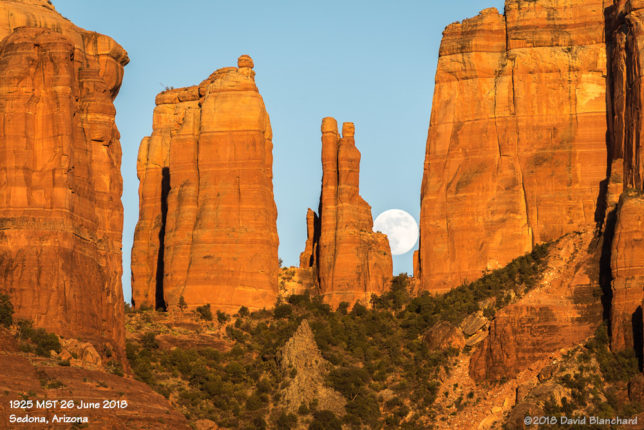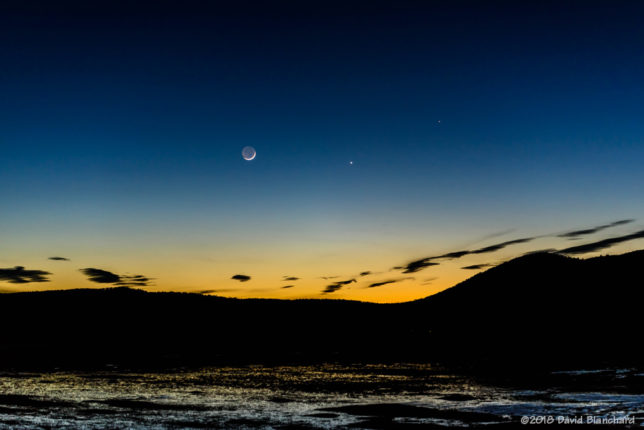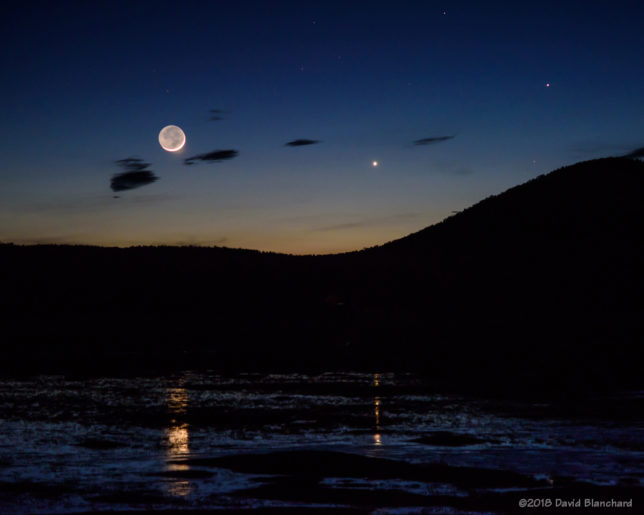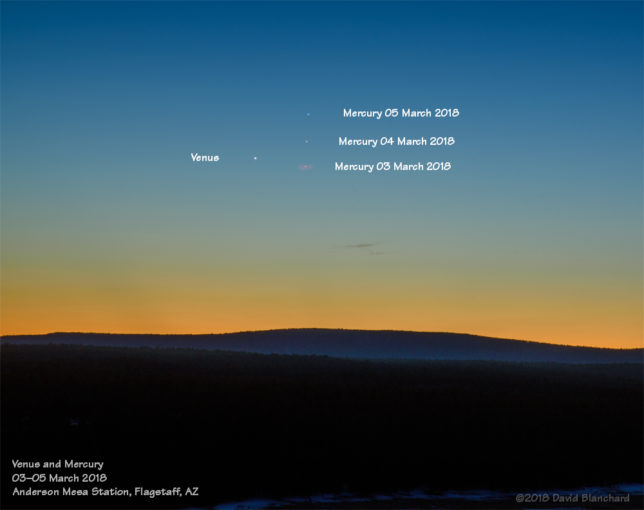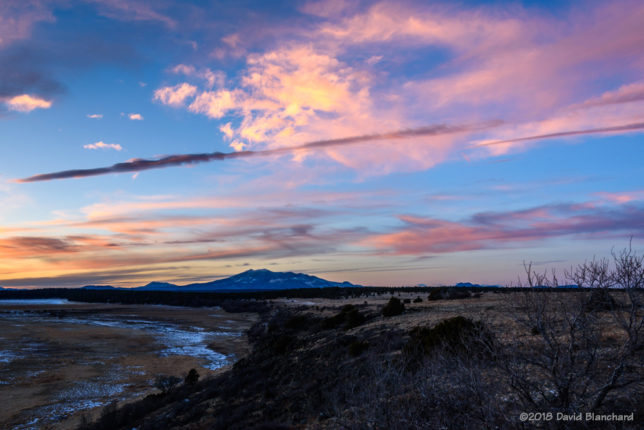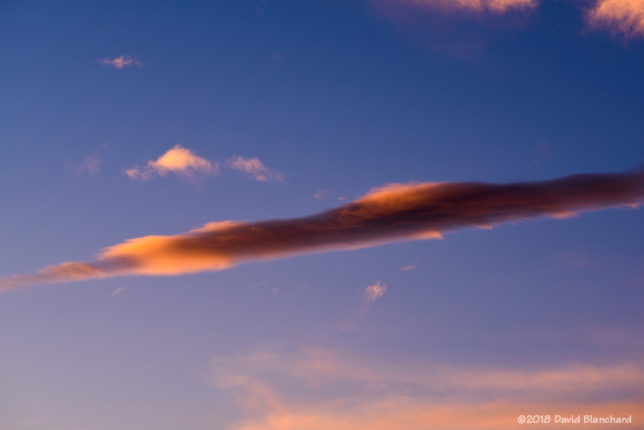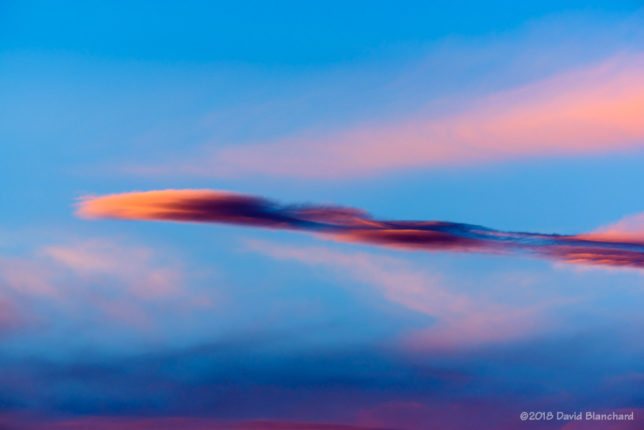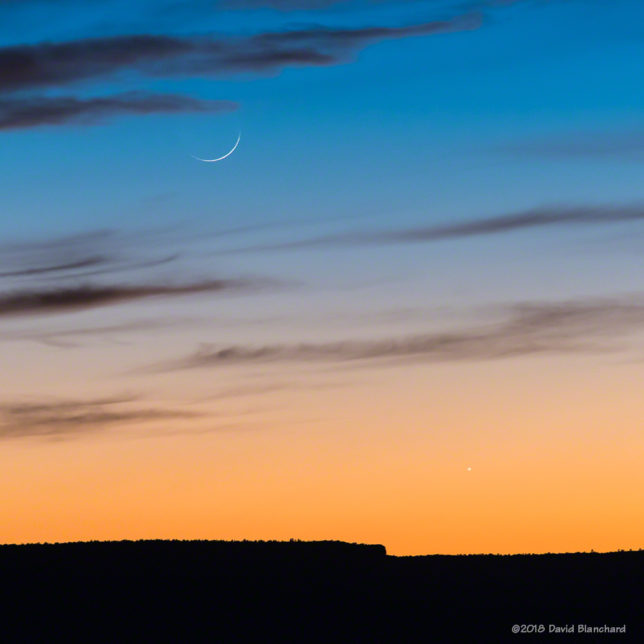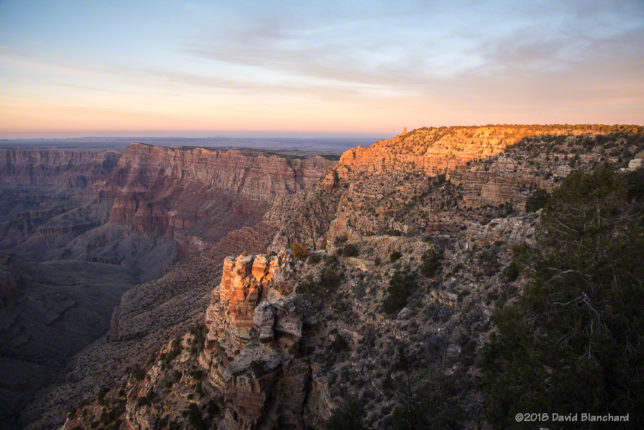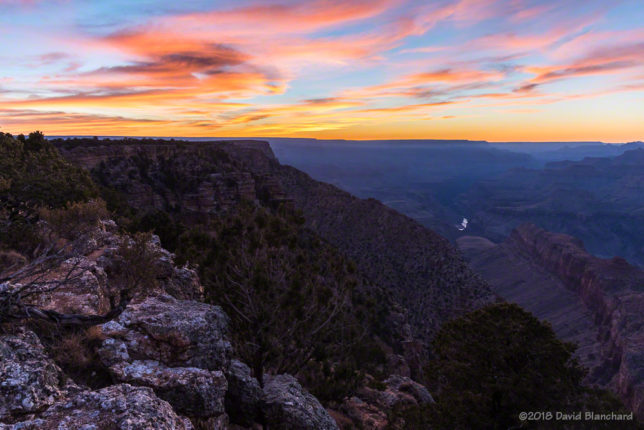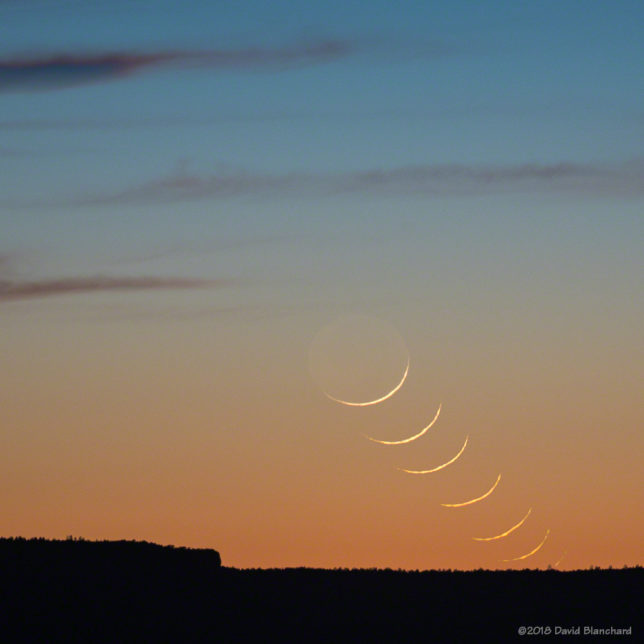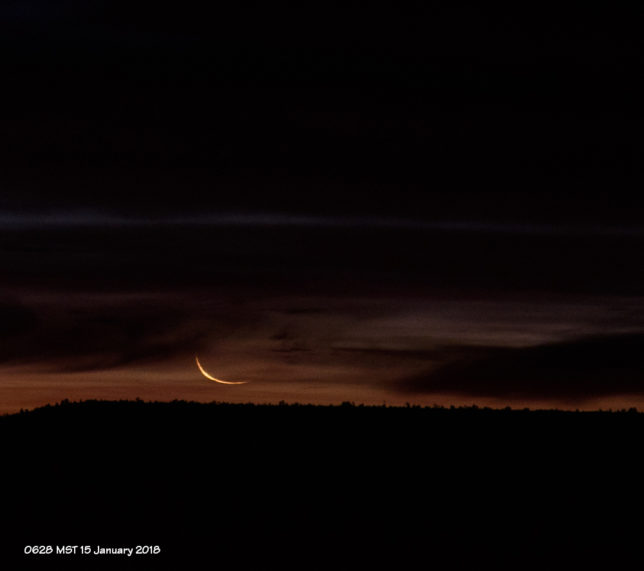The other morning promised an interesting alignment of the planets Venus and Mercury, the waning crescent Moon (3.4% illuminated), and the bright star Spica (Alpha Vir, the brightest star in the constellation Virgo) in the morning sky. All that was required was clear skies.
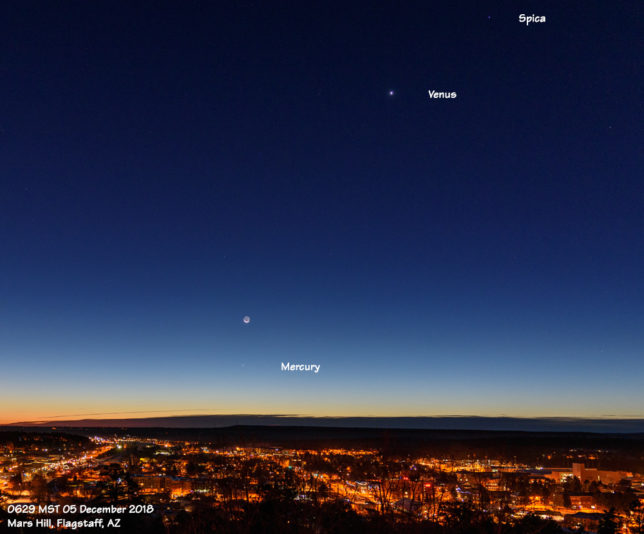
Various weather models showed essentially the same forecast. There would be a band of high clouds to our northwest and another band to our southeast. Overhead it would be clear.
And the forecasts turned out correct. Below is a satellite image taken at ~1330 UTC (0630 MST) showing a nice clear gap in the clouds.
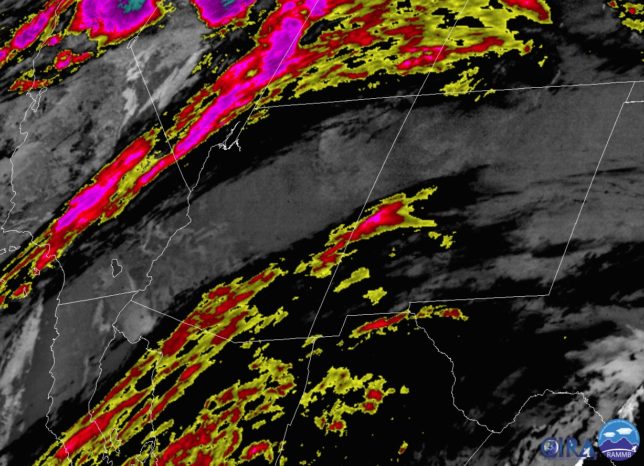
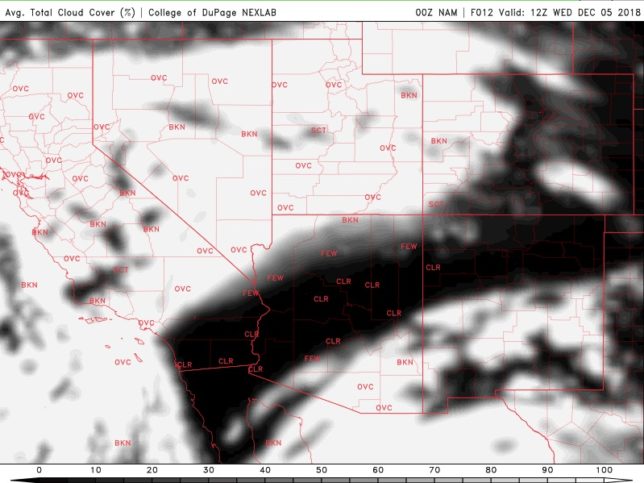
I drove to the overlook on Mars Hill, home of Lowell Observatory, in Flagstaff. It has very good views towards the east and is a location I have used many times over the years for astrophotography.
